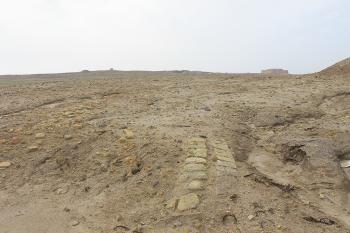American Journal of Archaeology | The Journal of the Archaeological Institute of America
You are here
The Suburbs of the Early Mesopotamian City of Ur (Tell al-Muqayyar, Iraq)
October 2023 (127.4)
The Suburbs of the Early Mesopotamian City of Ur (Tell al-Muqayyar, Iraq)
Suburbs and other zones of urban sprawl are not recent phenomena; they are as old as cities themselves. However, archaeological investigation of them has been relatively scarce, biasing reconstructions of the scale and diversity of early urban populations, industries, and economies, as well as reconstructions of ancient cities’ size and form. Here, we use aerial and satellite imagery in combination with ground survey to identify and characterize the extramural areas of one of the world’s earliest cities, Ur (Tell al-Muqayyar), in southern Iraq. The results suggest the need for some revisions of earlier impressionistic ideas about the extent, location, and dates of Ur’s suburbs. The distributions of ceramics of periods spanning the fifth to first millennium BCE suggest that Ur may have been founded in the fifth to fourth millennium BCE as a pair of spatially separate settlements that grew at different rates, only one of which developed into the city’s highly mounded core; that more distant suburbs formed by the third millennium BCE; and that intensity of occupation of various extramural zones covering hundreds of hectares shifted throughout the third to first millennium BCE. Overall, the data challenge characterizations of Ur as more compact and spatially continuous than other early Mesopotamian cities.
The Suburbs of the Early Mesopotamian City of Ur (Tell al-Muqayyar, Iraq)
By Emily Hammer and Angelo Di Michele
American Journal of Archaeology Vol. 127, No. 4 (October 2023), pp. 449-479
DOI: 10.1086/725907
© 2023 Archaeological Institute of America


